Affiliate links on Android Authority may earn us a commission. Learn more.
Samsung Galaxy Note 7 iris scanner: here is how it works
Published onAugust 2, 2016
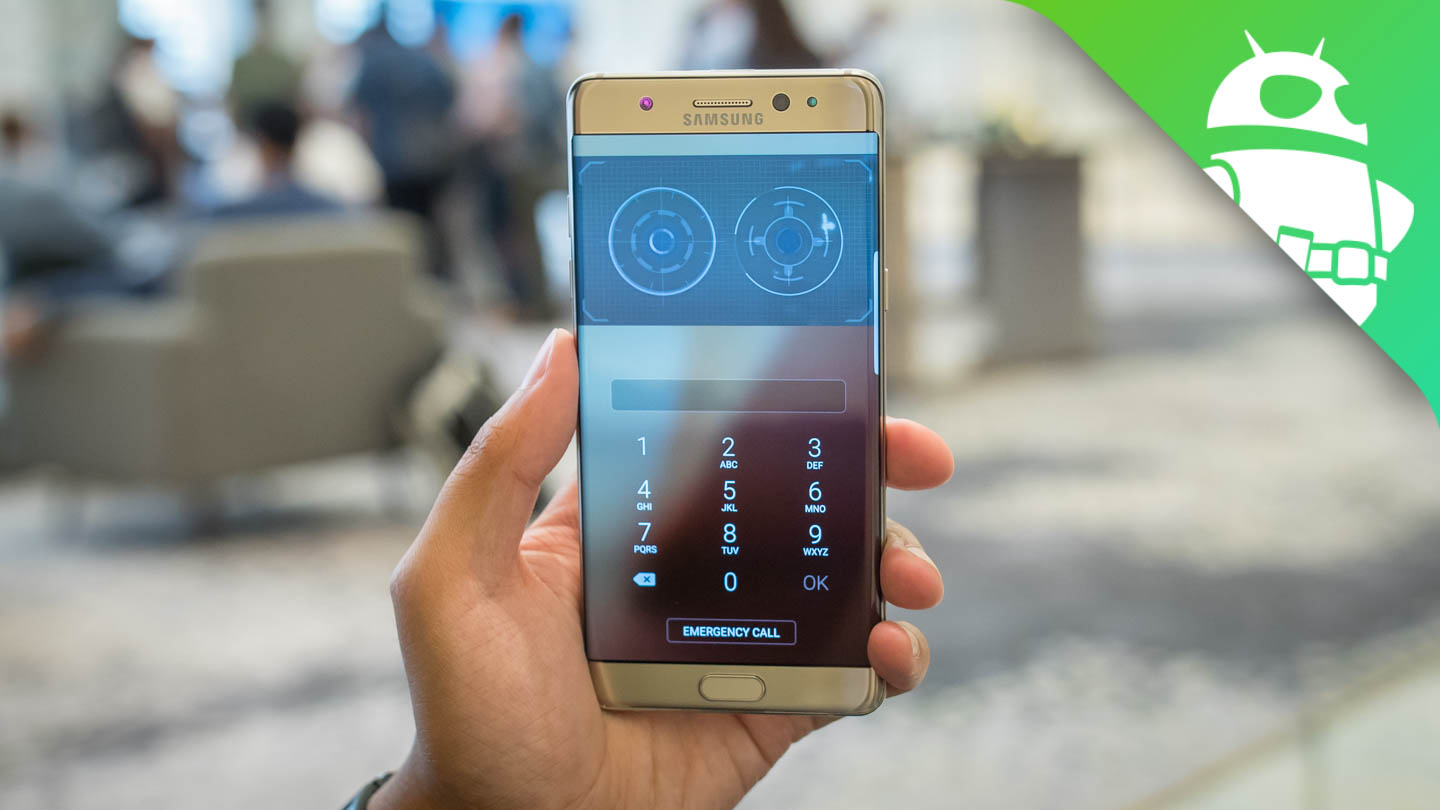
Security is a big focus in nearly every smartphone these days, and to Samsung, fingerprints are so passé – now, it’s all about the eyes. Is the future really here? That’s what we attempt to find out here, as we take a closer look at the Iris Scanner and security features of the Samsung Galaxy Note 7.
The first part we’ll delve into with the security features of the Note 7 are the myriad ways that you can unlock the device. PIN, pattern, simple swipe, and fingerprint are all still available and all still work as well as they always have. Samsung has done a great job of expanding and evolving the methods used to better protect their handsets over the years, and the company clearly isn’t holding still here with the introduction of the Iris Scanner into the fold.
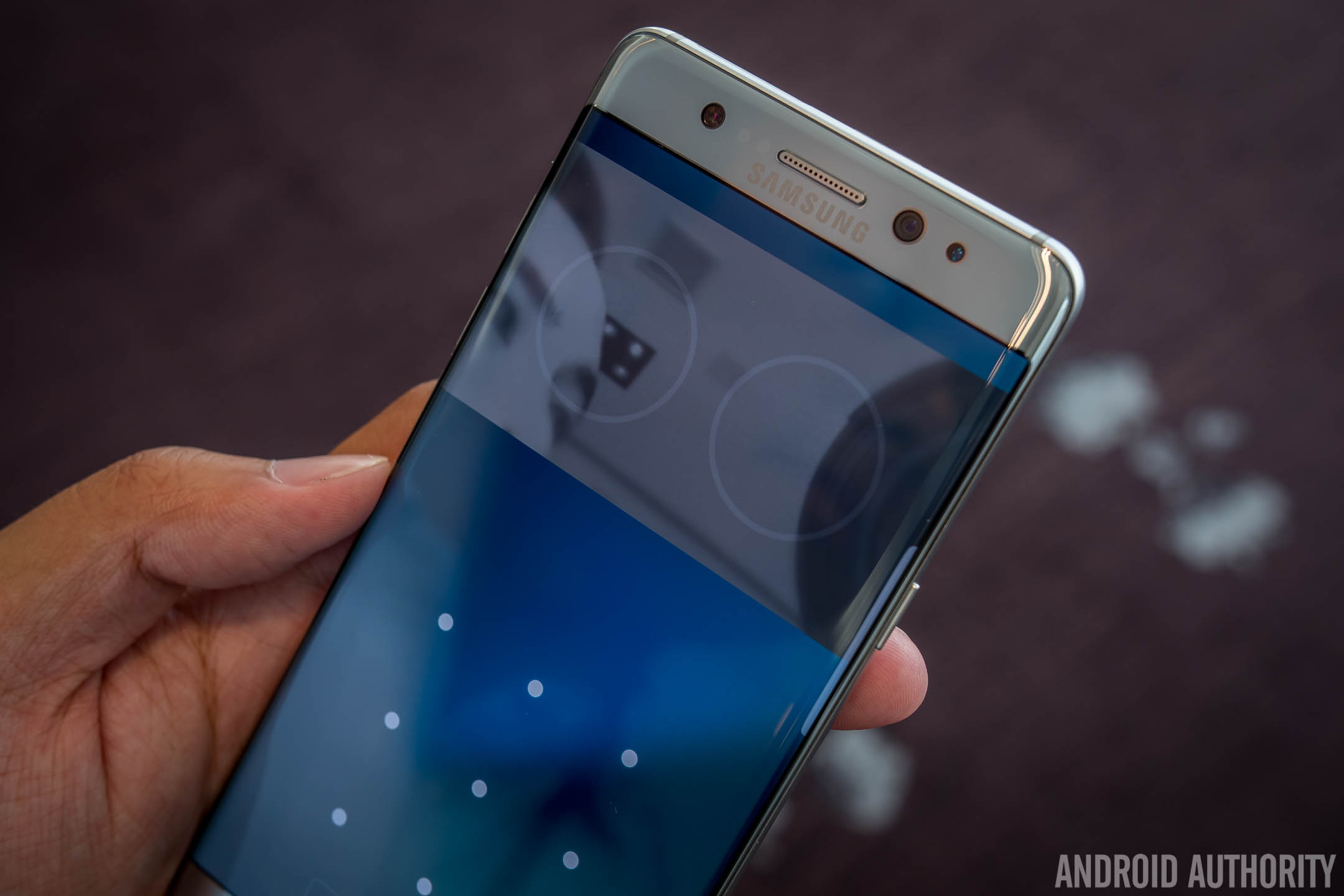
Accompanying the front facing camera is another camera dedicated only to recognizing the composition of one’s eyeballs. On the other end of that panel is an infrared light, used to make the scanner work in low light situations. These two modules work in conjunction to unlock the Note 7 simply by looking at it.
Setting up irises in the security and lock screen settings requires very little time, actually, but there are a couple things to keep in mind. The Note 7 shows a disclaimer that glasses and, ideally, contacts should not be worn when registering the one set of irises that can be used. After a couple of prompts, the upper third of the screen turns into the viewfinder for the iris scanner, where Terminator-like heads-up display elements are shown so users know where to put their eyes.
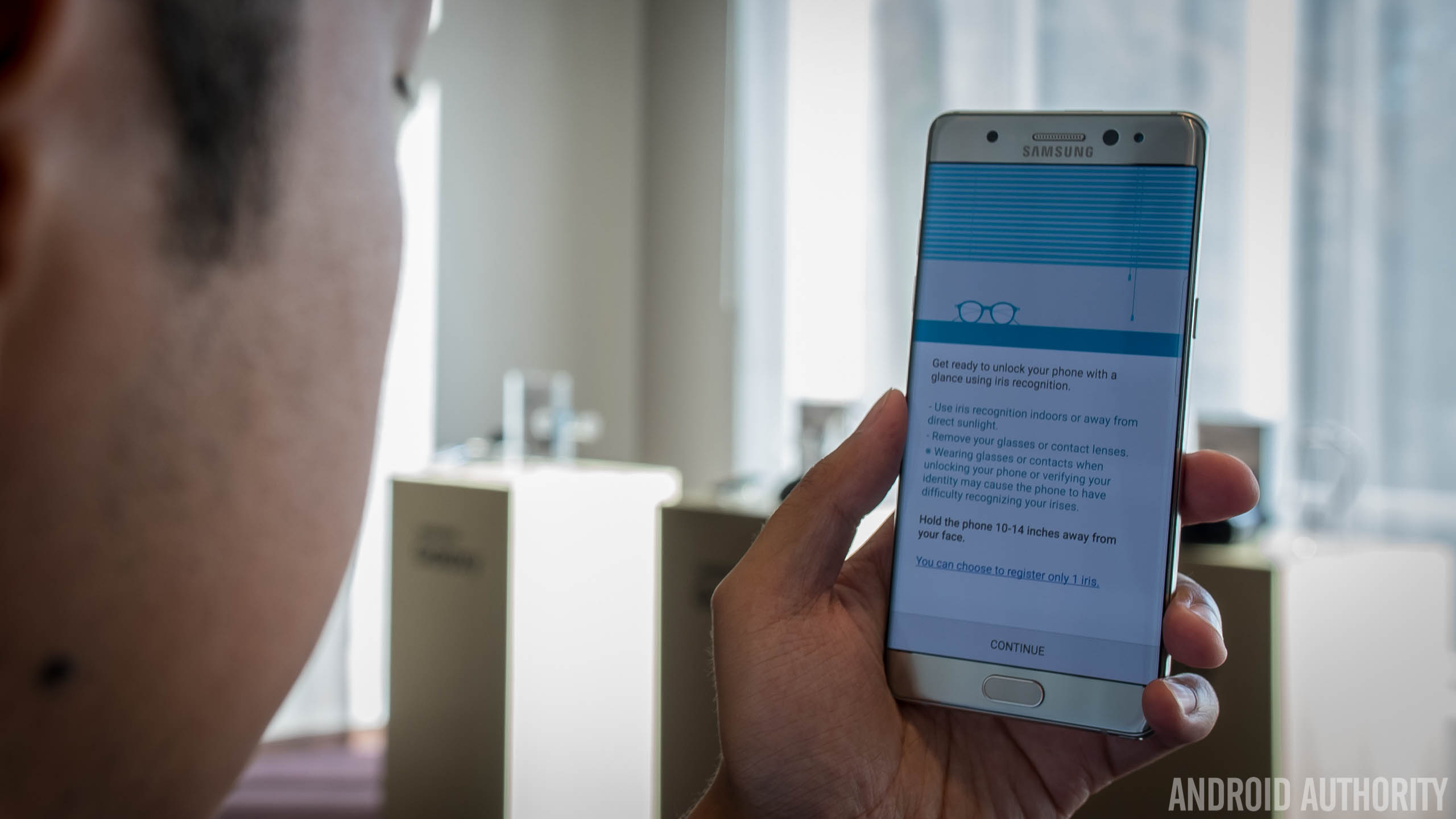
These same graphical elements are used to unlock the device, though the disclaimer will appear once again to tell the user that glasses and even contacts can keep the iris scanner from recognizing the unadulterated iris stored during setup. In my initial testing of the scanner, I wore contacts during setup and continued to unlock the device with them on. So at least in this limited test, I didn’t run into any issues, but mileage may certainly vary, and likely, colored contacts could throw things off.
Somewhat surprisingly, the iris scanner works very efficiently. As long as the phone is held correctly and at the typical distance away from one’s face, eyes should be well within the HUD elements shown after waking the Note and swiping to start the scanning process. Though it might seem cumbersome to still have to slide up, we were told that having the Iris Scanner always firing was far from ideal and adding in the swipe also added one final layer of protection.
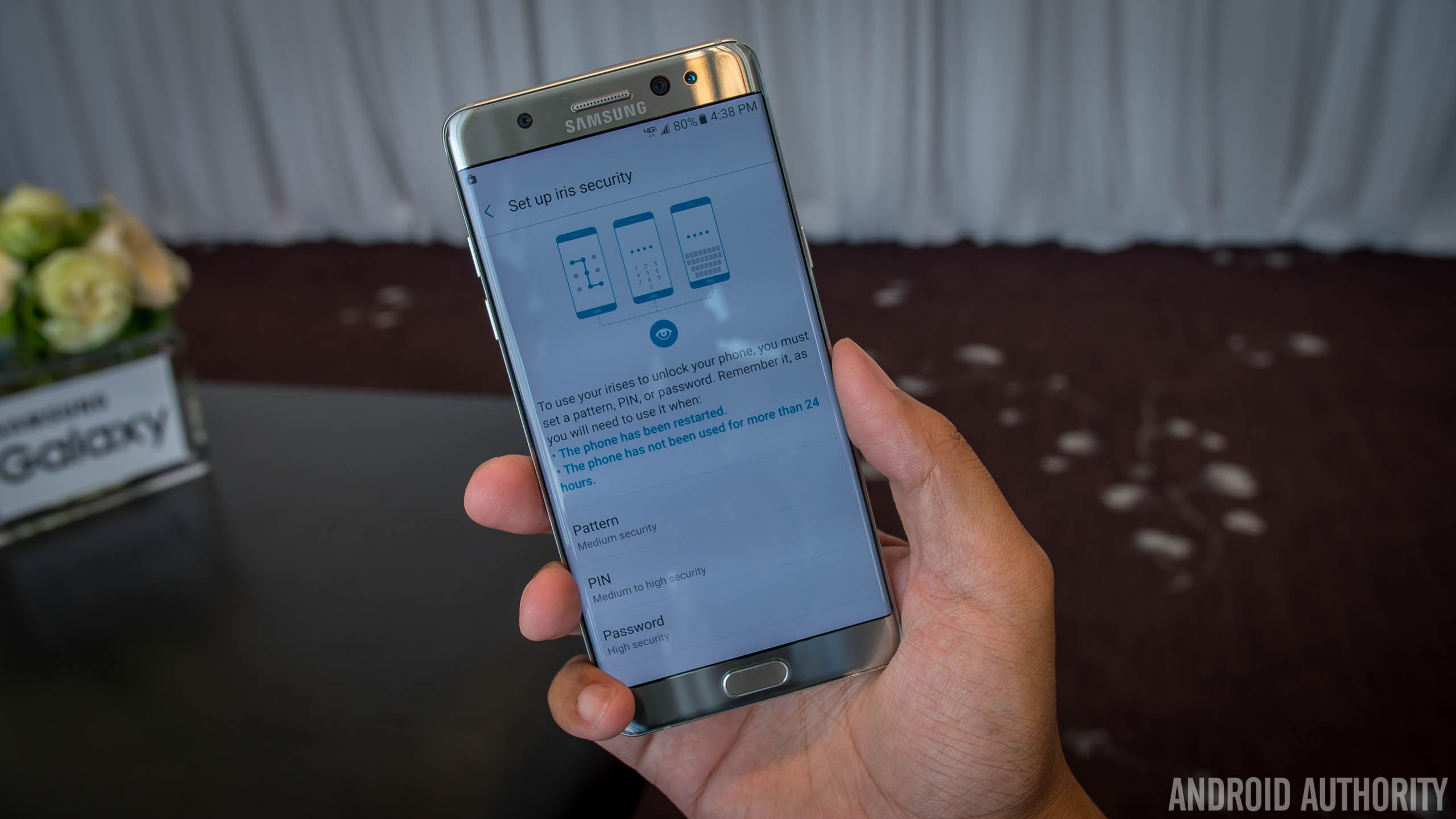
If the eyes are within the proper range and are “open fully,” as the phone might prompt users to do sometimes, the successful scan will simply open up into the user interface. When all elements are in place, this is a very fast and smooth process.
Our first impressions on the Iris Scanner are pretty positive. Especially considering we have seen iterations of this security feature before and they have definitely not been as responsive or seemingly reliable. As it stands, the Iris Scanner would be an interesting addition, but Samsung went a step further and brought a new security feature that leverages their lesser known but powerful system KNOX.
For those who don’t know, KNOX was, among a few other things, a way for Samsung to allow users to have essentially two different profiles for work and normal usage. On on profile would be a particular set of apps, accounts, and content for business use, and the other profile would be for everyday, personal use.
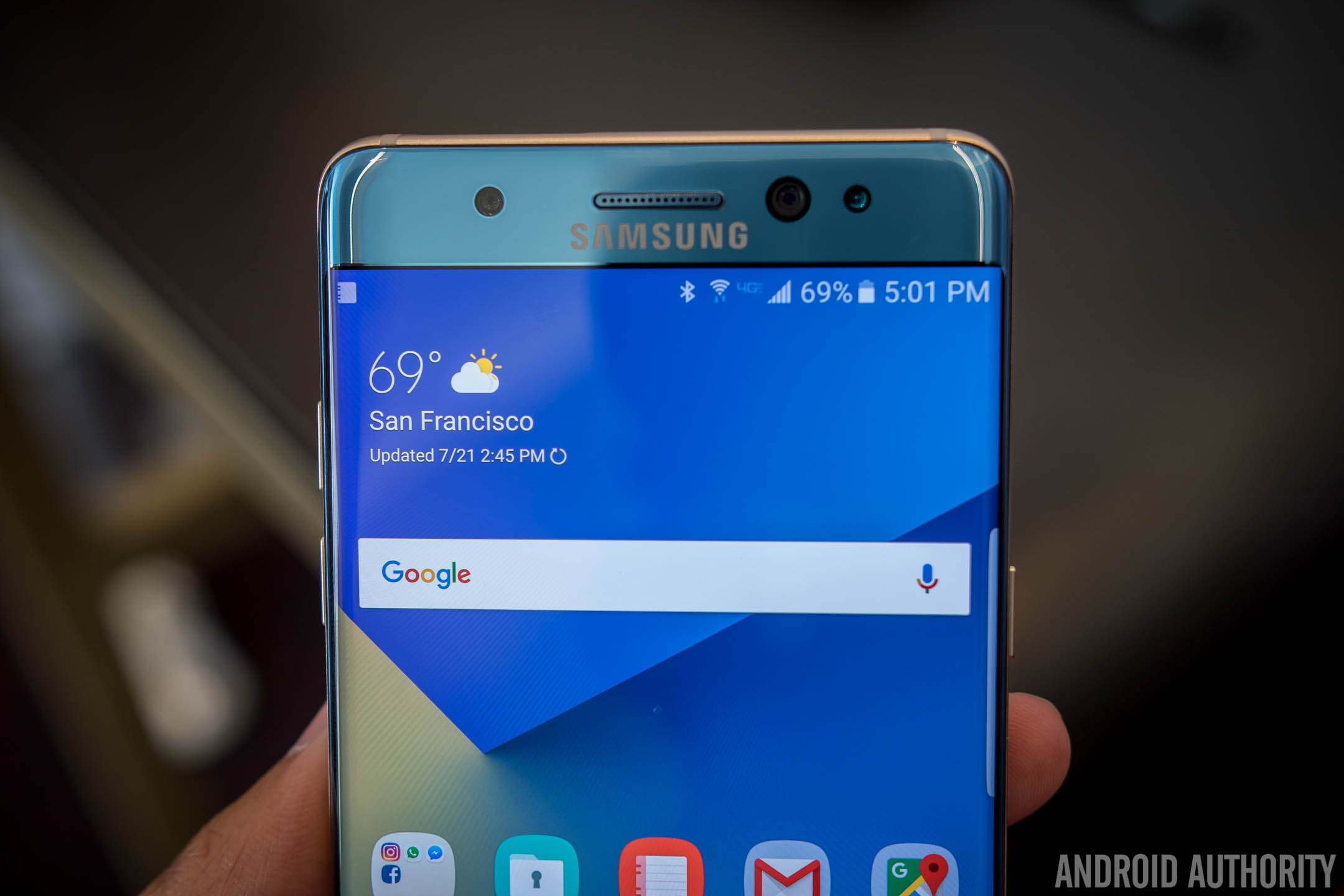
Though KNOX is still available across current Samsung devices, the Note 7 offers a modified version of this experience called a Secure Folder which is more geared towards everyday users and not just the business-minded crowd. In short, Secure Folder is a special folder that can house all of the same things a KNOX profile can, like specific apps, files, folders, and even accounts, with the ability to keep it locked and protected by all of the same measures used on the lock screen. This includes fingerprints and irises.
The Secure Folder could be a great place to store very sensitive information – our demo mentioned legal documents as an example. For an added layer of protection, the Secure Folder can be taken off of the homescreens and app drawer, leaving the only way to access it in the settings under ‘Secure Folder.’ Overall, however, it is an easy way to keep what you want away from prying eyes.
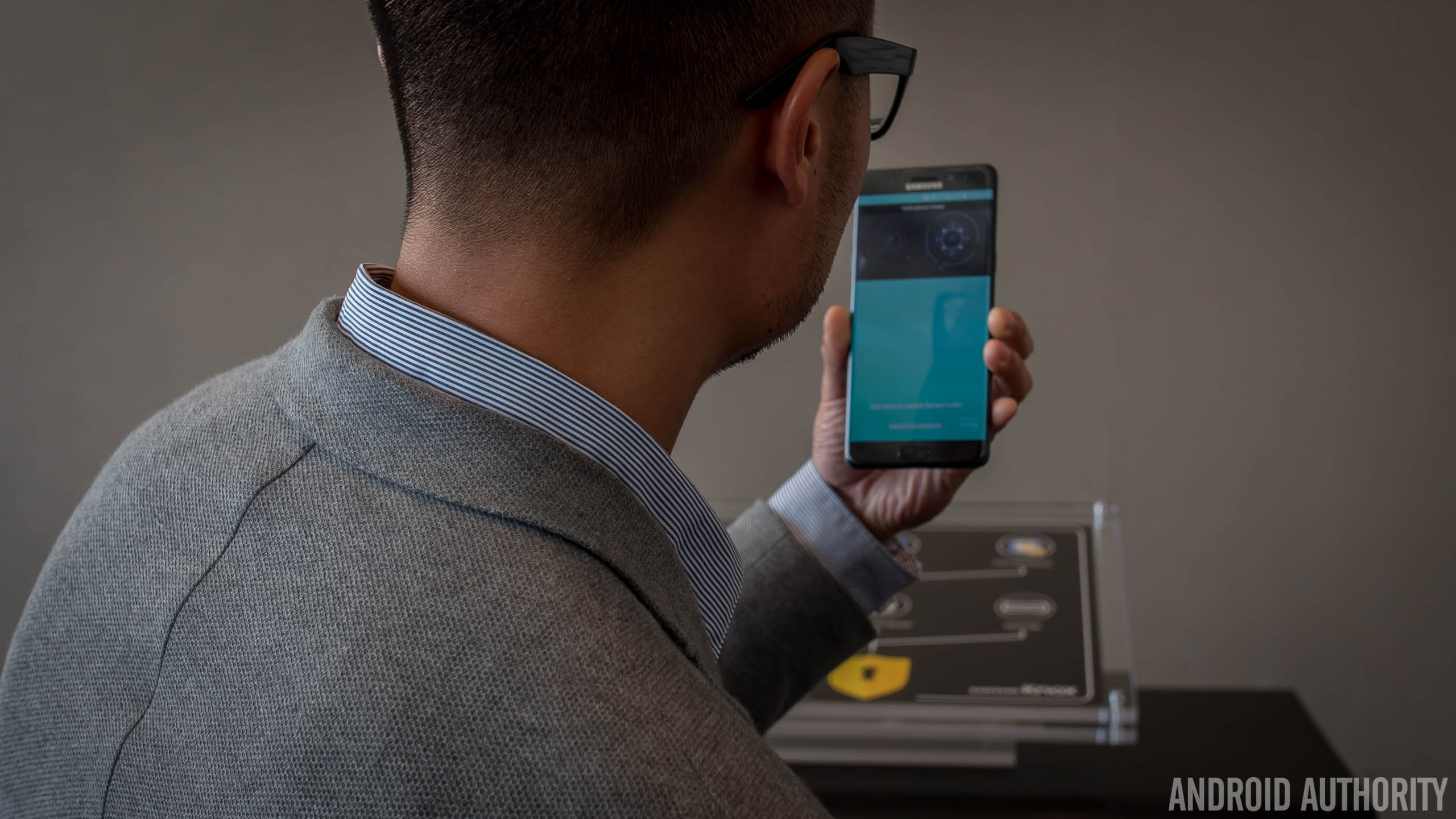
We applaud Samsung for making a step forward in security features for their phones, and if the Iris Scanner is our next general way of unlocking our devices, at least it has been executed pretty well thus far in the Galaxy Note 7. Whether this method is better than fingerprint scanners, pins, and passwords? That honestly will come down to personal preference.